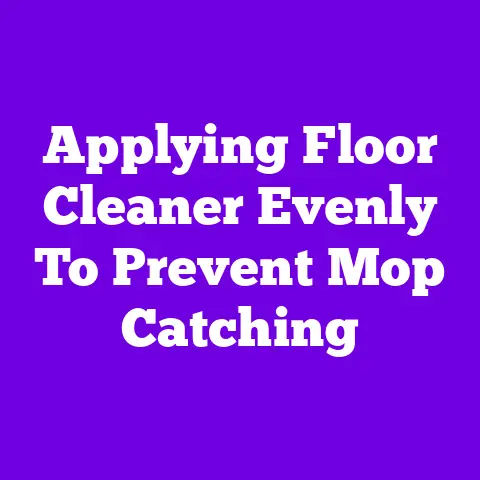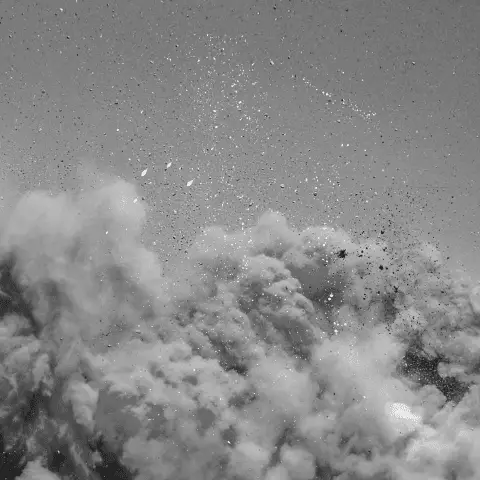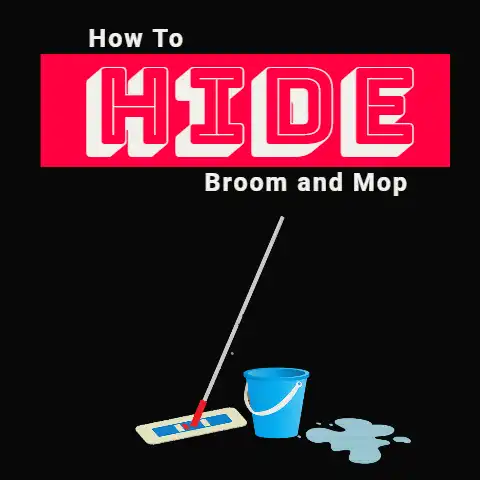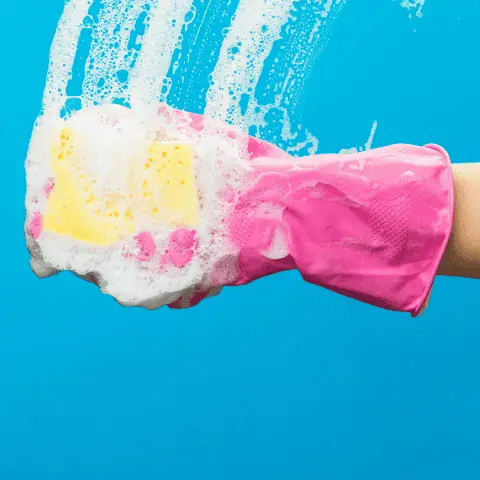Where To Dump Mop Water (3 Green & Sustainable Solutions)
To dispose of mop water, ideally, use the sanitary sewer system like the shower drain or toilet, as dumping it in kitchen sinks can cause clogs and infections. Alternatively, you can use a utility sink connected to the city’s sewer system, and if the mop water contains bleach, let it lose chlorine in sunlight before draining to protect the environment.
One of the most important things to think about when changing your mop water is where to get rid of it.
The most common place for this is to dump it into the toilet, however, if you live in an apartment building, this might not be ideal. Never pour it down your drain.
Did you know that the bacteria and fungi from your dirty mop water could proliferate and cause a clog?
Other options are to pour it into a bucket or flush it in the sink. But what’s the best option?
In this post, I’ll recommend some.
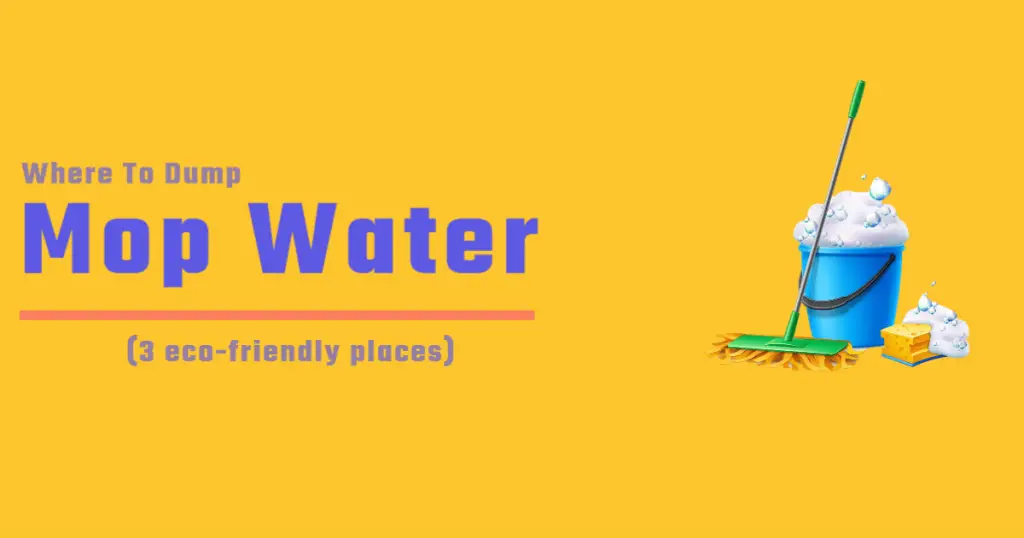
Key Takeaways
- Suitable containers for dumping mop water include mop sinks, floor drains, toilets, and outdoor drainage systems.
- It is important to avoid dumping mop water in inappropriate places such as fresh cleaning solution buckets, sinks used for food preparation, storm drains, street gutters, and landscaped areas.
- To prevent cross-contamination, empty mop water away from clean areas, use separate containers for dirty and clean water, properly clean and disinfect mop buckets, avoid contact between dirty mop and clean surfaces, and follow hygiene protocols.
- Using a mop sink promotes easy disposal of mop water, minimizes the risk of spills and accidents, allows for proper drainage and wastewater management, and promotes efficient cleaning practices.
Is Mop water dirty?
Yes, the mop water is dirty. People always make use of specialized cleaning products while mopping floors.
The mop touches hair, dirt, and dead insects.
No matter what type of mop you use, a wet mop, a sponge mop, or a dust mop, there is grimy water coming off it always.
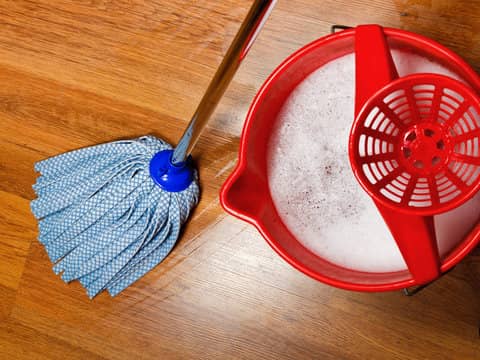
The mop water contains dirt and harmful chemicals in the cleaning products. This mop water may cause trouble for our health and the environment.
Where do people often dump the mop water?
People dispose of mop water, often down the toilet or the kitchen sink. It is terrible even to think.
Pouring down the kitchen drain means there is a full possibility that it will house dirt and many bacteria.

Though you have disinfectant in the water, yet it is not safe to pour it into the kitchen sink drain.
It is bad to wash food in the same sink that is just now drained with scary bacteria and hazardous chemicals.
Moving to a very important section of disposing of mop water. It is the toilet.
Dumping mop water into the toilet seems to be the common way in the majority of homes.
Everyone believes flushing the toilet is enough for the dirty mop water to pass through the sewer lines.
It may right now sound to be perfect, but it is not.
The harmful chemicals you added to the water before moping now after dumping into the toilet reach the ocean and rivers, causing trouble for the environment and nature.
It is the reason some countries consider it illegal and also fine for such actions.
Thus, before pouring mop water into the toilet, at least understand the chemicals in the cleaning product are not harmful.
Dangers of dumping mop water in the toilet
Clogged Toilets
Dumping the mop water in the toilet is a common practice, and it results in clogged toilets once in a few months or a year.
Once the toilet is clogged is certain to make everyone crazy to face the ordeal.
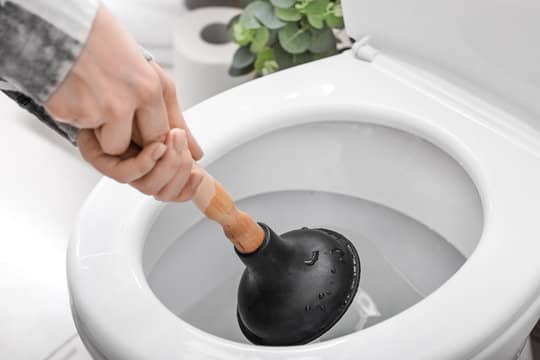
It is because the plunger fails to work and there is a need for the rooter guy to clear the toilet line completely to the sewer and fix everything.
It is expensive and frustrating.
Carry Small Plastic Bits
Dumping mop water includes small plastic bits or tampons lying anywhere down the toilets.
These plastic bits, or for that matter, anything else goes down the toilet with the mop water.
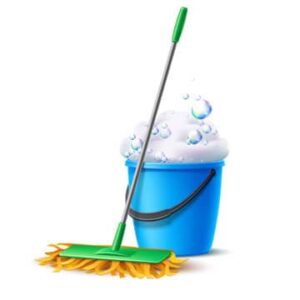
It can be a small toy part of your child that got stuck in the mop head, or some small comb that fell in the mop murky water while cleaning the table.
All these go down the toilet while dumping the mop water into the toilet. Again it results in clogging.
Plumbing Problem
Dumping into the toilet the mop water is seriously harmful.
It clogs with dirt the pipes and the dirt builds up in the line itself.
With regular dumping of mop water, the dirt gets accumulated in the toilet pipe, and sooner or later, it clogs.
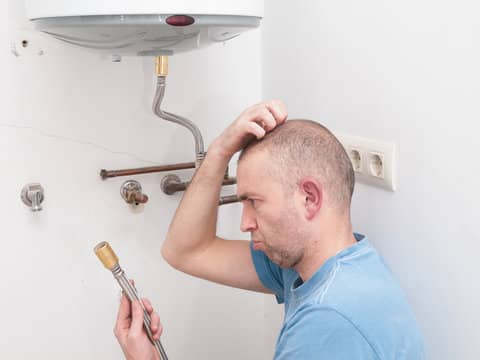
You will have to call a plumber to get the drain cleared.
At times to check if the blockage is on the upside or downside of the inspection port, putting on long rubber gloves and locating the blockage by putting your arm becomes inevitable.
It is a dirty job, and as someone does it, you have to pay what they demand.
There is no room for a bargain, and this shitty job does not clear without human intervention.
Bacteria and Dirt
The biggest danger of dumping the mop water in the toilet is that the bacteria and dirt may stick to the toilet sides and multiply without your knowledge.

Besides, the dirty mop water entering the sewer lines goes through treatment and is into the streams and rivers.
It means the cleaning products you are using to keep your house clean are now in the environment and damage the entire environment.
Thus, to mop your house using a chemical that cannot treat you must dispose of the water elsewhere.
For doubts about your area’s law, consult your local council.
What Are the Options to Dispose of Mop Water?
Disposing of mop water should be done responsibly to prevent environmental pollution and health hazards.
The options for disposing of mop water depend on its contents, as different types of mop water may have varying levels of contaminants.
Here are some common options for disposing of mop water:
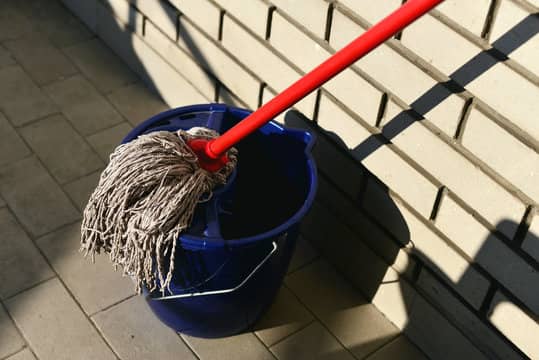
#1
Down the Drain (where allowed)
If the mop water consists of only clean water or mild cleaning agents and does not contain harmful chemicals or hazardous substances, you may be able to dispose of it down the drain.
However, local regulations may vary, so it’s essential to check with your municipality or local water authority to ensure this is permitted.
#2
Toilet Disposal
For small amounts of mop water, especially if it contains biodegradable cleaning solutions, you can consider disposing of it in the toilet.
Again, ensure that it’s safe to do so and won’t cause any issues with your plumbing or local sewage system.
#3
Outdoor Disposal
If the mop water is relatively clean and contains only non-toxic substances, you may dispose of it on grassy areas away from storm drains, water bodies, or gardens.
This allows the water to soak into the ground, reducing the risk of contaminating water sources.
#4
Evaporation
In arid regions, you can allow the mop water to evaporate in a safe outdoor location, away from plants and sensitive environmental areas.
#5
Professional Disposal Services
If the mop water is hazardous due to the presence of toxic chemicals, solvents, or other harmful substances, you must seek the services of a professional hazardous waste disposal company.
They are equipped to handle and properly dispose of hazardous materials following legal guidelines.
#6
Absorbent Materials
For small spills or spot cleaning, you can use absorbent materials like cat litter, sawdust, or absorbent pads to soak up the mop water.
Once absorbed, dispose of these materials in the trash or follow local guidelines for hazardous waste disposal if necessary.
It’s essential to know the composition of the mop water before choosing a disposal method.
Always prioritize environmentally-friendly options and comply with local regulations to ensure responsible waste management.
If you are uncertain about the contents of the mop water, it’s best to err on the side of caution and treat it as hazardous waste until properly assessed.
Why Is It Important To Dump Mop Water Immediately?
Dumping mop water immediately is crucial as it helps prevent the spread of bacteria and contaminants, ensuring a clean and hygienic environment.
Dirty mop water contains a combination of dirt, grime, and cleaning chemicals that have accumulated during the cleaning session.
If left sitting for an extended period, these substances can promote bacterial growth and create an unsanitary environment.
By disposing of mop water promptly, preferably into a floor drain connected to a sanitary sewer system, the risk of harmful chemicals or contaminated water entering the storm drain is minimized.
This not only protects local ecosystems but also prevents potential harm to human health.
Additionally, proper disposal reduces the chances of hazardous chemicals from cleaning supplies contaminating groundwater or other water sources.
Ultimately, immediate dumping of mop water contributes significantly to maintaining cleanliness and hygiene in various settings.
What Are The Common Cleaning Chemicals Used In Mop Water?
In the realm of cleaning, it is common practice to include various cleansing agents in the solution used for floor maintenance, ensuring optimal sanitation and hygiene.
Some individuals prefer using eco-friendly cleaning products, such as vinegar or lemon juice, which are known for their natural antibacterial properties and environmental benefits.
Others may opt for commercially available cleaners specifically designed for floor surfaces like hardwood floors.
These cleaners often contain surfactants and disinfectants that help remove dirt and kill germs effectively.
Regardless of the chosen cleaning agent, it is crucial to dispose of mop water properly after use.
It should never be poured down the kitchen sink drain or shower drain due to potential clogging issues.
Instead, it is recommended to dump mop water into a utility sink or outdoor area away from clean water sources.
Other Uses for Leftover
Utilizing residual liquid from floor maintenance can offer alternative applications for its remaining solution.
When disposing of dirty water used for mopping, it is important to consider environmentally friendly options.
One way to repurpose the dirty water is by using it as warm water for cleaning purposes in other areas of the house.
For instance, it can be utilized to wipe down kitchen floors or clean bathroom surfaces.
However, caution must be exercised when using this water on toilet pipes or sanitary sewerage systems, as it may cause clogs or damage.
Alternatively, if the mop water is relatively clean and soapy residue-free, it can be used to dampen paper towels for wiping furniture or other household objects.
In such cases, hot water should be avoided as it can potentially damage certain materials.
Cleaning Chemical Alternatives
One potential solution to consider for environmentally friendly floor maintenance involves exploring alternative cleaning chemicals.
Many traditional cleaning solutions contain harsh and dangerous chemicals that can be harmful to both human health and the environment.
Instead of using bleach water or other toxic chemicals, it is important to seek out safer alternatives.
When disposing of mop water, it is crucial to avoid draining it into regular sinks or drainage systems as this can contribute to pollution.
Instead, a service sink specifically designated for dumping murky water should be utilized.
Additionally, chemical drain cleaners and other chemical cleaners should be avoided as they can further contaminate the water supply and harm aquatic life.
By choosing eco-friendly cleaning products and implementing proper disposal methods, we can ensure a safer and more sustainable approach to floor maintenance.
How To Dispose Of Bleach Water Outside?
To properly dispose of bleach water outside, it is essential to identify a designated and secure location that prevents any potential contamination to the surrounding environment. Here are some guidelines to consider:
- Pour bleach water into a grease trap or drain opener system specifically designed for handling chemical treatments. This ensures that the bleach water will be treated appropriately before entering the sewage system.
- Avoid pouring bleach water into wet buckets or other containers that may contain residual chemicals or dirt, as this can lead to bacterial contamination or cross-contamination.
- Do not dispose of bleach water in clogged toilets or sanitary sewers, as this can cause damage and blockages in the plumbing system.
- Remember that disposing of bleach water responsibly is crucial for maintaining a clean and healthy environment. It is advisable to consult local regulations or seek professional advice regarding specific disposal methods.
By following these guidelines, you can ensure proper disposal of bleach water without causing harm to the environment or risking public health.
Is It Illegal To Dump Mop Water Outside?
In the previous subtopic, we explored the proper disposal of bleach water outside.
Now, let us address the legality of dumping mop water outdoors.
Dumping mop water outside can pose significant environmental concerns and may be illegal in many jurisdictions.
Mop water often contains a variety of contaminants such as dirt, dust, bacteria, and cleaning chemicals that can contaminate water sources if not disposed of properly.
When dumped into sewer lines or bodies of water, these substances can disrupt ecosystems and harm aquatic life.
Additionally, the concentration of chemicals in mop water can be harmful to aerobic septic systems by destroying beneficial bacteria and causing damage to the system’s functions.
Therefore, it is important to follow local regulations regarding proper disposal methods for mop water to prevent the release of dangerous compounds into the environment.
Where Should A Food Worker Dispose Of Mop Water?
A proper disposal location for the wastewater used during food preparation can be found by following local regulations and guidelines.
In most cases, food workers are required to dispose of mop water in a designated area such as a kitchen drain.
This ensures that the wastewater is properly treated and does not contaminate other areas or water sources.
It is important to prevent solid dirt from entering the drain, as it can clog pipes and cause plumbing issues.
Automatic toilet cleaning systems, specifically those with components of sewage grinder, should not be used for disposing mop water as they may not be able to handle solids or large volumes of liquid.
Additionally, citrus-based or natural cleansers should be avoided as they may have adverse effects on the environment when mixed with other common home chemicals.
By following these guidelines, food workers can effectively dispose of mop water without compromising cleanliness standards or causing harm to the environment.
Where Do You Dispose Of Mop Water Into The Restaurant?
One intriguing statistic reveals that the proper disposal location for wastewater generated during food preparation in restaurants is crucial to preventing contamination and maintaining cleanliness standards.
Firstly, the type of flooring plays a significant role in determining the appropriate location for dumping mop water.
For instance, if the restaurant has a wooden floor, it is important to avoid pouring bleach or other antibacterial chemicals directly onto it as this can damage the wood.
Instead, cold water can be used to clean wooden floors effectively without causing harm.
Additionally, following product specifications for any cleaner used is essential for ensuring maximum effectiveness.
Lastly, dusty water should never be dumped back into buckets containing fresh cleaning solution to prevent cross-contamination and maintain cleaner floors throughout the establishment.
Conclusion
In conclusion, the proper disposal of mop water is crucial for maintaining a clean and safe environment.
Immediate dumping of mop water helps prevent the spread of bacteria and contaminants.
It is important to be aware of the cleaning chemicals used in mop water and consider alternative options when possible.
Proper disposal methods vary depending on the location, with regulations in place to ensure compliance.
Food workers must adhere to specific guidelines for disposing of mop water in restaurants.
Overall, understanding and following appropriate disposal practices is essential for maintaining hygiene standards in various settings.

